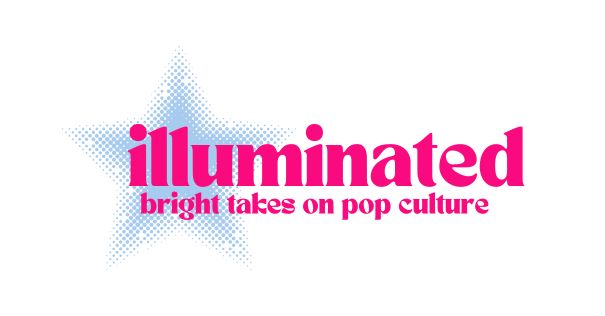With the next viral product or trend just a scroll away, it’s easy to get swept up in the belief that you need the latest ‘it’ item. Influencers and viral content fuel the constant drive to stay on top of the latest beauty must-haves and fashion fads. Fast fashion sites and drugstore dupes are quick to capitalise on these fleeting trends, churning out copies that make it all the more easier to jump on the bandwagon. But what happens when the constant flood of viral trends starts to take its toll? For some, it becomes a never-ending shopping spree – a cycle of instant gratification, followed by regret,and an exhausted bank balance.
When 21-year-old Ellie Davis realised she had spent over £3000 buying things she had seen online, she knew that her spending was becoming out of control.
“I’m embarrassed to say but – yeah I was definitely wrapped up in what was trending on social media and was always going off to my online shopping apps after I had seen something I thought looked good. It’s wild how quickly something new gets popular. The ‘Clean Girl’ aesthetic was the first trend I remember buying into and influencers were pushing all these ‘must have’ pricey products like Drunk Elephant skincare. I think that’s what kicked off the trend-chasing for me. Then fashion trends and ‘aesthetics’ like ‘coastal granddaughter’ and ‘old money’ became popular.” (outfits characterised as being preppy and formal mixed with beachwear) “ I bought into those too, I think I went onto the Hollister website after seeing a video of a girl being like – ‘this is the trend of the summer’ and I must’ve spent around £300 on new clothes that I hardly wear anymore.”
Her family even began making jokes that ‘the postman might as well move in’ and that she had ‘parcels every other day’. While the stream of trends carried on rolling out on social media Ellie said her spending seemed to become more of a habit than a conscious choice.
“I’d see all these products with rave reviews, and it was like a reflex to think, “Oh my god, I need this,” or “That looks amazing!” I’ve definitely been influenced by TikTok creators and celebrities, for sure. I remember watching a Madison Beer makeup tutorial, and she used the Charlotte Tilbury blush wand thing. I thought it looked so good on her, and it was selling out, so I rushed to buy it. It cost around £30 I think, which is over three hours of work for me! When I tried it, I didn’t even like it that much. My family kept telling me to stop wasting my money. The good thing is that people online are really good at finding dupes for expensive products. You can always buy into something you want with a cheaper version, which seems great when you think about it. But then you can almost guarantee that you’ll see another thing that claims to be better. By that time it’s like you’ve bought a bunch of cheaper versions to replace the original, so you’ve basically spent almost as much as you would’ve on the more expensive one. It’s kind of a weird vicious cycle.”
Finding credibility from paid content creators in an online world that profits off of views and likes can sometimes warp honest opinion, says financial service worker Jack Turner.
“Many prospective consumers can find themselves unknowingly falling into the trap of trusting online personalities who get money from affiliate links and brand partnerships etcetera, when they buy things from them online. I would recommend looking at genuine consumer reviews from real users rather than an online personality who may have brand affiliations. Consumer reviews tend to offer more honest, long-term feedback that can help you assess whether the item is worth your money. It’s important to be mindful of the longevity of an item before making a purchase. Ask yourself: Why do I want this? Will this item add value to my life, or is it just a temporary fixation? And, crucially, how long will it last, both in terms of quality and popularity?
The best way to save money on trends would be to not buy into them at all considering they don’t always offer lasting value or quality. However, there are definitely ways you can make sensible financial decisions if you are looking to buy something- and no one is stopping you from indulging once in a while. Shopping around for alternatives such as reseller sites can cut costs on products that might otherwise be out of budget or a poor investment.”
However, not all influencers view their role as purely transactional, despite the financial incentives behind the scenes. For some, such as Emma Swanson, a former Instagram influencer, it was important to promote things she authentically would use . Having had deals with accessory brands like ‘Sungait’ glasses, the 20-year-old amassed over 15,000 followers across her social media platforms before she took a step back to focus on other career opportunities. As she explains, the responsibility to maintain trust with her audience was always at the forefront of her decisions, even when it meant turning down lucrative opportunities.
“I really liked doing it because I was able to share products I was passionate about, and it gave me flexibility to earn money on my terms. It felt like a great way to engage with my followers while promoting something I believed in and thought would be worth them trying. Each time I worked with a company or brand I had to post a photo and a video talking about the product . The brands would offer me money based on how many likes / views I got and I had to show how many views and likes I got before partnering with them. I typically got several hundred likes on my posts and sometimes, if someone bought the product using my referral, I would get an incentive, like a small commission. From a profit perspective, it’s definitely worth promoting if the product is high quality and the cost is low enough to generate good revenue. But again, it’s risky. If the company’s reputation suffers later on, it could backfire for the influencer too. So while promoting trending products can be profitable, it’s important to make sure the brand aligns with your values and won’t harm your personal image.”
Despite this, many social media users are still moving away from products promoted by influencers in favour of utilising what they already own to save money. Instead ,TikTok especially, has seen an influx of users coining the term ‘Project Pan’ – a movement that focuses on using your products until they are completely gone before buying anything new.
One person following this trend is Lucy Smith, a retail worker, who admits she finds herself spending money on things that she already owns various versions of.
“For most people I think they might judge this ‘Project Pan’ thing because typically that’s what you would do anyway – buy something and then use it up before going back and getting more. I found myself though, having bought things that I don’t even need. I mean this in the sense that I see something, like a new mascara advertised, and then buy it when I already have a couple on the go. When I think about it I can’t remember the last time I used something until it went completely empty, my things tend to sit on my dresser until I think ‘well I don’t really want this anymore’ or ‘I never use this so why keep it?’ A lot of the things I have bought have accumulated over the last couple of years, so I figured this would be a good way to reevaluate what I already have versus what I think I need. As a society we need to have a bit more forethought and think about why we are so compelled to throw money at things that are just shiny and new. We could just invest in something we have tried and like ourselves rather than things that are strategically dangled in front of us.”
The general consensus seems to be that our decisions are often warped and predetermined by what is seen as cool or fashionable online. Trend chasing to keep socially on top seems to be never ending, and those who subscribe are gaining nothing of substance from it. So, will the next ‘it’ trend be no trend at all? Maybe – for a hot minute, while some of us sit with the consequences of our overconsumption. But when the inevitable “run, don’t walk to get…” reverberates through the echo chamber, will we find ourselves right back, fighting for a spot in the shopping line?



